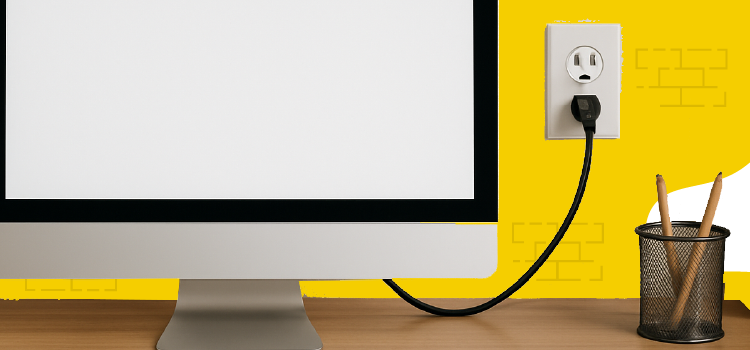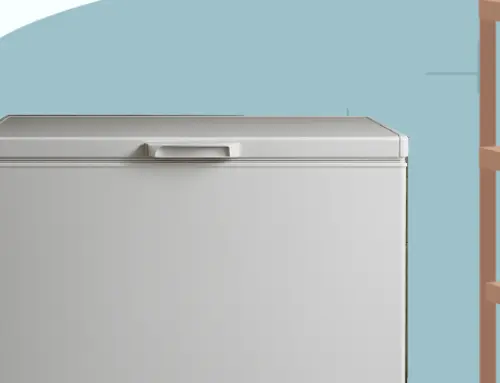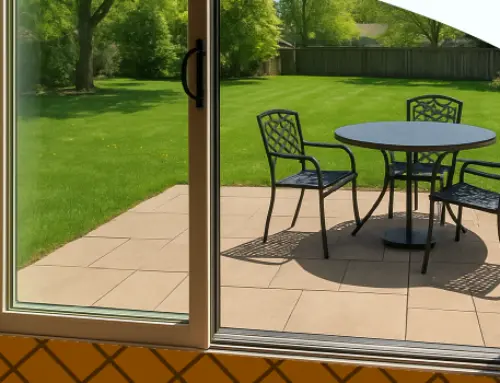Why Is My Power Bill So High? Tips for Homeowners in the Midwest
by Tyler Castle
16 min read

You open your power bill, see the total, and wonder how it got so high. You didn't buy new appliances or leave lights on, yet the number keeps climbing. If that sounds familiar, you're not alone.
Bills rise for different causes, from seasonal weather swings and hidden energy drains in your home, to rate changes from your energy supplier. The real challenge is knowing what's "normal" and what's a red flag, so you can take control instead of being surprised.
As energy experts with 35 years of experience who've seen thousands of electricity bills, we know what you need to look out for and how you can lower your bill with ease. Follow your favorite energy supplier and read on!
Key Points of This Article:
- Heating and cooling take the biggest share of your energy use, making up over half of the average home's electricity costs.
- Electronics still use power when off, with TVs, gaming systems, and chargers quietly adding to your bill.
- Old appliances are energy hogs, while ENERGY STAR models use far less electricity and can save you money over time.
Why Is My Power Bill So High? 5 of the Most Common Reasons
If your electric bill suddenly jumped, and you’re wondering. “Why is my electric bill so high?” You’re not alone. Many homeowners find themselves asking why their bill is so high during peak seasons or after small changes at home. In most cases, high power bills come down to five main factors:
1. Your Usage (What’s Happening Inside Your Home)
Every light, appliance, or device that runs on electricity gets counted on your bill. The biggest culprits are usually heating and cooling systems, since they work hardest in summers and winters. In fact, according to The U.S. Department of Energy, 43% of a home utility bill goes to heating and cooling.
In the same way, water heaters, dryers, and ovens also draw large amounts of energy when in use. And even smaller things you don’t think about, like an old refrigerator humming in the garage, a dryer that takes extra cycles to get clothes dry, or chargers and electronics left plugged in, quietly add up over time if you use these appliances on the regular.
Real-life usage spikes to your electricity bill could include:
- Moving into a larger home with more square footage to heat, cool, and light.
- Adding a second refrigerator or freezer, which essentially doubles refrigeration power costs.
- A major appliance is starting to fail, like a dryer that takes two cycles to finish clothes. We’ve learned that the older the appliance, the more energy you consumes over time.
If usage is driving your bill higher, it means your home is working harder than you think. Recognizing which appliances use the most energy helps you decide where small changes (like adjusting thermostat settings or running full laundry loads) can make the biggest difference.
2. Your Rate (What You’re Charged per Unit of Energy)
The other aspect of your bill is the rate you pay per kilowatt-hour (kWh). This refers to basically what you’re paying for each unit of electricity. The rate you pay for electricity varies depending on your state and the type of energy market you live in, as well as the type of energy plan you’re enrolled in; this can all affect how high your power bill is.
For example, if you’re on a variable-rate plan, your rate can change from month to month depending on the energy market, which could potentially lead to higher electric bills from one month to the next.
That’s why bills sometimes jump during a heat wave, cold snap, or fuel shortage, even if you didn’t use much more electricity.
Knowing your current rate and energy plan helps you understand how those factors contribute to your overall bill.
3. Weather (Hotter or Colder Days Mean Higher Bills)
As an energy supplier, we’ve learned that weather is one of the biggest drivers causing your power bill to spike. Hot days make your AC work harder and for longer periods of time to keep your house cool.
If you’re cooling or heating your home with electricity and you notice seasonal spikes in summer and winter, they’re likely tied to weather. Planning for these months, locking in a more suited energy plan that can keep your bills more predictable, or adjusting your thermostat slightly, can help keep costs from climbing too high.
4. Location (Where You Live Changes What You Pay)
Where you live can drastically affect your electric bill. Hot climates drive up cooling costs especially when your AC is used almost 24/7. Even within the Midwest, energy needs and utility rates vary, so location impacts both usage and price.
Location is likely something you can’t change, but knowing what’s “normal” in your area helps you spot red flags. For reference, based on the most recent data from the U.S. Energy Information Administration, the average rate for electricity is 17.47 cents per kWh as of July 2025.
If your bill is consistently higher than national averages, it may be time to look at efficiency improvements or your energy plan.
5. Lifestyle Changes (More People, More Energy)
Who lives in your home and what they do makes a difference. If you have guests staying over, a child home from college, or you start working from home, your daily energy use changes. More showers, laundry loads, cooking, and device charging can all push your bill higher.
When more people are at home, energy use naturally rises. Recognizing these lifestyle shifts helps you set expectations and adjust habits where possible so the increase doesn’t catch you by surprise.
How Midwest Weather Impacts Electricity Bills
If you live in the Midwest, you already know the weather can swing from one extreme to another, with icy winters, humid summers, and everything in between. Those changes aren’t just uncomfortable; they have a direct impact on your electricity bill.
Cold Winters = Higher Heating Costs
In states like Ohio and Pennsylvania, winters are long and cold. Even if your home relies on natural gas for the furnace, electricity still plays an important role for other special needs where the furnace might not cut it.
For example, space heaters, heat pumps, and even running your furnace fan continuously can cause your electricity use to rise.
This means that when temperatures drop into the teens or below, your system works much harder to keep your home comfortable, and your bill can increase as a result.
Hot, Humid Summers = Heavy Air Conditioning
On the other side of the year, Illinois and Ohio summers bring high humidity and heat waves that make air conditioning a necessity. Central AC units and window units are among the biggest electricity users in any home. Even with a 500 watt window AC unit (that’s on the smaller side when it comes to the size of AC units), can cost you an extra $19.45 a month at a rate of 16.21 cents per kilowatt hour.
The hotter it is outside, the harder your AC has to work to maintain your set temperature indoors. Even a couple of degrees on the thermostat can mean your system runs for hours longer each day, pushing your power bill to become high.
Seasonal Transitions Also Add Hidden Costs
Spring and fall may feel milder, but they come with their own costs. During seasonal transitions, people tend to open windows, run fans, and switch appliances on and off more often. Appliances like dehumidifiers in the basement or extra space heaters in chilly rooms can add unexpected usage that sneaks onto your bill.
We’ve found that turning your AC off completely while you’re away and cranking it back up when you return can increase energy costs by about 20% compared to leaving your unit on and adjusting the thermostat when you come back.
14 More Causes of High Power Bills
High electric bills often come from everyday habits or overlooked issues in the home. Here are the most common causes of high power bills and what you can do to lower your costs:
1. Inefficient Lighting
Old incandescent or halogen bulbs use far more electricity than modern LEDs. Switching them with LED bulbs gives you the same brightness and cuts lighting costs by up to 90%.
2. Older or Inefficient Appliances
Appliances like refrigerators, dryers, and water heaters use more electricity as they age. Newer ENERGY STAR models are designed to be efficient, so consider an upgraded model when you can. But if you can’t upgrade yet, regular maintenance will help reduce waste.
3. Phantom or “Vampire” Devices
Electronics such as TVs, gaming systems, and phone chargers draw power even when they are turned off. Unplugging them or plugging them into a smart power strip can stop that hidden energy drain.
4. Running Appliances Inefficiently
Dishwashers and washing machines use the same amount of energy whether they are full or half empty. If you’re a culprit of running half loads of laundry or dishwashing, this can contribute to why your electric bill is so high.
Running only full loads and choosing eco or cold-water settings helps cut down on wasted power.
5. Hot Water Heater Settings
When your water heater is set too high, it works harder than necessary. We’ve found that lowering the temperature to around 120°F keeps water hot enough for daily use while saving energy.
6. Heating and Cooling Issues
Air leaks, poor insulation, or overdue HVAC maintenance force your system to run longer. Sealing leaks, adding insulation, and keeping filters clean help your system work efficiently.
7. Ceiling Fans Spinning the Wrong Way
Fans need to spin counterclockwise in summer to push cool air down and clockwise in winter to circulate warm air. If the direction is wrong, your HVAC system ends up working harder.
8. Leaving Windows Open
Opening windows lets warm or cool air escape, making your HVAC system run more than it should if you have it running. Keep your windows closed during heating and cooling seasons and use blinds or shades to block out heat from the sun to help cool your room more efficiently.
9. Lack of Window Coverings
Bare windows make it harder to control your indoor temperature. Curtains, blinds, or shades help keep heat inside in the winter and block it out in the summer.
10. Faulty Wiring
Faulty wiring can make appliances use more power than they should, and it can also be unsafe. If you suspect a wiring issue, it’s best to have a licensed electrician check your home.
11. Overreliance on Room-to-Room Appliances
Portable space heaters and window AC units are convenient but usually less efficient than central systems. If you need to use them, keep them limited to the rooms you’re actually in.
12. Pets and Everyday Habits
Pets at home during the day often mean the lights, heating, or cooling are left on longer. Extra laundry and cleaning also use more power. Smart thermostats and timers help balance comfort and savings.
13. Your Home Isn’t “Smart” Enough
Without smart devices, it’s easy to forget to turn off appliances or adjust the thermostat. Smart plugs, thermostats, and power strips automate savings and reduce wasted electricity.
14. Peak-Time Energy Use
Electricity costs more during peak demand hours if you are on time-of-use rates. Running your laundry, dishwasher, or charging devices at night or in the early morning can lower costs.
While you can’t control global energy markets, you can control how efficiently your home uses electricity. Small, consistent changes in these common areas can add up to noticeable savings on your monthly bill.

How to Read and Understand Your Electric Bill
Many homeowners are surprised by their power bill because it isn’t always easy to read. Between charges, fees, and terms like kWh, it can feel like you need a translator. But once you understand the main parts, your bill becomes a tool to spot problems and take control.
1. Usage (How Much Electricity You Used)
This is usually measured in kilowatt-hours (kWh). A kilowatt-hour is simply one kilowatt of power used for one hour. For example, running a 1,000-watt space heater for one hour equals 1 kilowatt-hour. The more kilowatt-hours you use in a billing cycle, the higher your bill.
Compare this month’s usage to last month or the same time last year. If there’s a big jump, check for changes in weather, lifestyle (like working from home), or appliances that might explain it.
2. Supply Charges (The Electricity Itself)
The supply charges is the cost of the electricity you use multiplied by the rate your supplier or utility charges you. If your supply rate is high, your total bill will be too, even if your usage stays the same depending on your plan type.
If a spiking supply charge doesn’t sit right with you, consider our Unlimited Energy plan that gives one stable supply charge* throughout the duration of your contract no matter how much you use.
3. Delivery Charges (Getting Power to Your Home)
This fee goes to your local utility for maintaining power lines, poles, and meters. Even if you choose to get your energy from an energy supplier, your delivery charge stays under your utility because the utility still delivers the electricity. You can’t change or switch your utility provider but knowing what they do helps you see what portion of your bill they’re responsible for and how they charge you.
4. Taxes and Fees
Most bills include state or local taxes, environmental charges, or small service fees. These are typically non-negotiable but usually make up a smaller portion of your bill. If taxes or fees suddenly spike, call your utility company to confirm what changed.
Smart Tips to Lower Your Power Bill
High energy bills are not always about major issues. Sometimes, small changes in daily habits and simple home adjustments can make a big difference. Here are practical tips you can start using right away:
1. Adjust Your Thermostat Wisely
Your heating and cooling system uses more energy than anything else in your home. Even small changes, like lowering the heat at night in winter or raising the AC a little when you are out in summer, can ease the load on your system and lower your bill.
2. Upgrade to LED Lighting
Older bulbs waste a lot of energy. Switching to LEDs gives you the same brightness while using far less electricity, and they also last much longer.
3. Unplug Devices You’re Not Using
Electronics like TVs, game consoles, or chargers still pull power even when they’re “off.” These phantom loads sneak onto your bill. Unplug what you can or use a smart power strip to shut them down completely.
4. Use Appliances More Efficiently
Dishwashers, washers, and dryers consume a lot of energy each time they run. You can save by running full loads, choosing cold water when possible, and air-drying clothes or dishes instead of using the heat cycle.
5. Adjust Your Water Heater
Water heaters often work harder than necessary. Setting the temperature to a safe and comfortable level gives you plenty of hot water without wasting energy.
6. Seal Drafts and Check Insulation
If warm or cool air is leaking out of your home, your HVAC system has to replace it, which drives up your bill. Sealing gaps around doors and windows and checking attic insulation can make your home more efficient.
7. Run Appliances at the Right Times
In many areas, electricity costs more during high-demand hours such as late afternoon and early evening. Running appliances like laundry machines or dishwashers later at night or earlier in the day can lower costs.
8. Keep Your HVAC Maintained
A system that is not cleaned or serviced regularly has to work harder to keep up. Replacing filters on time and scheduling seasonal tune-ups will help your HVAC system run smoothly and use less energy.
Make Your Bill More Predictable with Unlimited Energy
Even if you manage usage carefully, seasonal weather, lifestyle changes, and rising supply charges can make bills unpredictable. Our Unlimited Energy Plan can help make your power bill more predictable with one simple feature. Instead of worrying about how much you used this month or whether your supply charge increased, with our Unlimited Energy Plan, you’ll have one flat monthly supply charge.* This means:
- No more surprise spikes in your supply charge* when the summer heat or winter cold forces your HVAC to run nonstop.
- No guessing how much your next supply charge* will be after hosting guests or working from home more often.
- No worrying about sudden spikes in your supply charge.*
You can’t always control how much energy your home needs, but you can control how predictable your bill is. The Unlimited Energy Plan takes the stress out of supply costs and gives you peace of mind all year long. Explore Santanna’s Unlimited Energy Plan today and see how easy it is to bring predictability back to your bills.
FAQs
Why is my bill higher than my neighbor’s?
Even in similar homes, energy use can vary. Differences in insulation, the number of people living in the home, thermostat settings, and the efficiency of appliances all affect your bill.
Why is my bill high if I wasn’t home?
Appliances like refrigerators, water heaters, or electronics left plugged in still use electricity whether you’re home or not. Heating and cooling systems may also run to keep your home at a set temperature.
Do old appliances really increase energy costs?
Yes. Older models, especially refrigerators, washers, dryers, and water heaters, typically use more electricity than new ENERGY STAR-certified versions. Over time, they can add hundreds of dollars to your annual bill.
Is it cheaper to run appliances at night?
It depends on your utility plan. If you’re on a time-of-use rate, electricity costs more during peak demand (usually late afternoon and evening). Running appliances at night or early morning can save money. If you’re on a flat-rate plan, the time of day doesn’t matter.
High power bills don’t come out of nowhere. They’re shaped by how much electricity you use, the rate you’re charged, and outside factors like Midwest weather, your location, and even lifestyle changes in your home. Along the way, we looked at the appliances and systems that use the most energy, the common everyday habits that drive costs up, and how to read your bill so you know exactly where your money is going.
Once you understand what’s driving your bill higher, you can take the right steps to manage it, whether that means making small changes around the house, preparing for seasonal spikes, or choosing an energy plan that gives you more stability.
And if predictability is what you’re looking for, Santanna’s Unlimited Energy plan is designed for exactly that. Instead of worrying about how much you used this month, you’ll have one flat monthly supply charge* you can rely on. Take control of your next electric bill now!
* Restrictions apply. Enrollment based upon program eligibility. Customers using more than 125% of normal monthly usage as determined by Santanna may be required to switch plans.
Tyler is an experienced energy professional, having worked for Santanna Energy Services, for the past four years. He is passionate about renewable energy and believes that diversifying the energy grid is the key to a sustainable future. Tyler is dedicated to supplying consumers with the best possible energy solutions and works diligently to make sure that Santanna can deliver the highest quality service.







